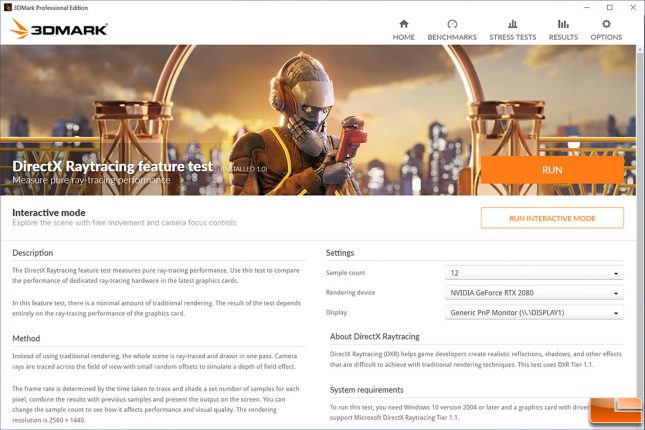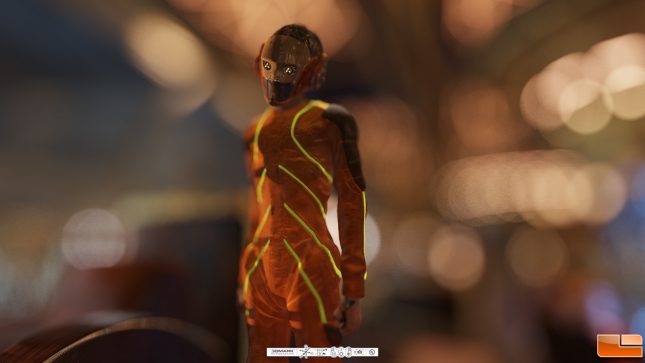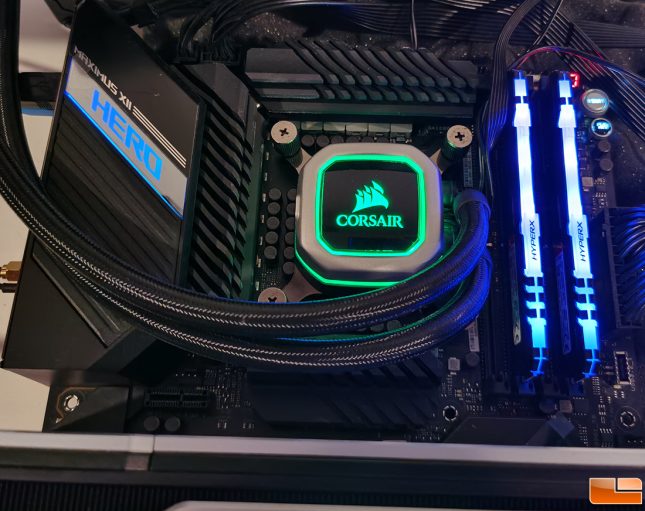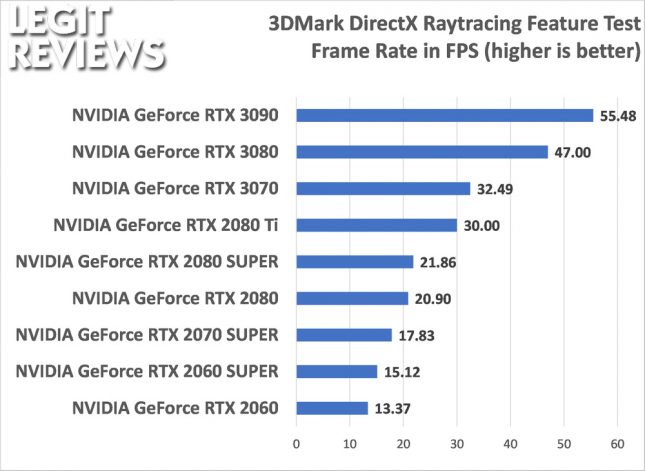3DMark DirectX Raytracing Feature Test Benchmark Results
3DMark DirectX Raytracing Feature Test
Earlier this week the benchmark team over at UL introduced a new 3DMark feature test that measures pure ray-tracing performance. The release of the 3DMark DirectX Raytracing feature test comes just before the debut of the AMD Radeon RX 6000 Series cards are set to come out on November 18th. AMD’s RDNA2 graphics architecture performance remains relatively unknown with regards to raytracing. In fact, we’ve seen rumors going both ways in recent weeks. Some are saying that AMDs raytracing performance is on par with the NVIDIA RTX series cards and we’ve seen some that say it doesn’t come close. The release of this feature test will help us compare NVIDIAs and AMDs raytracing implementation and see just how strong they are.
This is one of the first synthetic benchmarks that has been developed to compare the performance of the dedicated ray-tracing hardware capabilities in graphics cards. Real-time ray tracing continues to gain momentum, so it is nice to see benchmark utilities like this coming to market that will be able to show off the performance difference between ray-tracing-capable graphics cards from AMD, NVIDIA and eventually Intel. It should also be noted that the DirectX Raytracing feature test is a free update for those users that have 3DMark Professional Edition that have an annual license.
The 3DMark DirectX Raytracing feature test was designed to make ray-tracing performance the limiting factor. Instead of relying on traditional rendering techniques, the whole scene is ray-traced and drawn in one pass. Camera rays are traced across the field of view with small random offsets to simulate a depth of field effect. The frame rate is determined by the time taken to trace and shade a set number of samples for each pixel, combine the results with previous samples and present the output on the screen.
This test uses features from DirectX Raytracing Tier 1.1 to create a realistic ray-traced depth of field effects and the rendering resolution is 2560 1440. Camera rays are randomized with per-pixel offsets. There are 12 samples for each pixel when running the test with default settings. We left the test at its default settings for our benchmarking.
Legit Reviews Test System Specifications
- CPU: Intel Core i9-10900K 10-core – buy from Amazon
- Motherboard: ASUS ROG Maximus XII Hero Z490 – buy from Amazon
- CPU Cooler: Corsair H100i PRO RGB 240mm – buy from Amazon
- RAM: HyperX Fury RGB 32GB 3600MHz DDR4 – buy from Amazon
- SSD: Samsung 970 EVO Plus 2TB NVMe SSD – buy from Amazon
- PSU: Corsair RMx Series RM1000x Power Supply – buy from Amazon
- Monitor: Acer Predator XB271HK 4K G-Sync Monitor – buy from Amazon
- OS: Windows 10 Pro – buy from Amazon
3DMark DirectX Raytracing Feature Test Benchmark Results
Final Thoughts
We tested the nine NVIDIA GeForce RTX Founders Edition graphics cards that NVIDIA has sent us over the past several years. The results show that the NVIDIA GeForce RTX 3090 tops the charts with an average frame rate of over 55 FPS, which is 18% more performance than the RTX 3080 and 71% more than the RTX 3070. The GeForce RTX 3070’s score of 32.49 FPS shows the 3070 was 8% better than the GeForce RTX 2080 Ti. We tried to run NVIDIA GeForce GTX 10 series cards for fun as well as the AMD Radeon RX 5700 XT, but all lack the required Microsoft DirectX Tier 1.1 feature set needed to run the benchmark.
The new GeForce RTX 30 series graphics cards are based on the Ampere GPU and feature NVIDIA’s 2nd gen RTX architecture. The faster 2nd gen Ray Tracing Cores, faster 3rd gen Tensor Cores and new streaming multiprocessors deliver more performance than any card we tested in the RTX 20 series was capable of delivering.
We are less than two weeks away from the AMD Radeon RX 6800 XT and Radeon RX 6800 cards coming out and we are excited to see how these RDNA2 based cards will perform on this new benchmark. The flagship AMD Radeon RX 6900 XT comes out on December 8th, so we’ll have to wait a bit longer to see how the flagship cards from AMD and NVIDIA compare!
We also plan on looking at real game titles that are based on Microsoft’s DXR and upcoming Vulkan Raytracing APIs.




